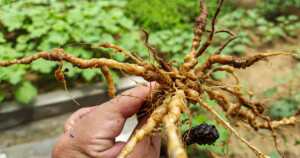This week, our Water Break Podcast reached the milestone of 4,000 downloads. Our fanbase is growing quickly, as it took us 18 episodes and 16 months to reach 3,000 downloads but then only 3 more episodes to reach the 4,000-download mark. The statistics report from Blubrry, our podcast hosting service, has also let us know that we now have listeners in 63 countries. That’s a lot of interest for a podcast devoted to water and wastewater treatment.
While a great deal of the podcast’s success is due to Heather Jennings being such an amazing, hardworking host, we also send a big Thank You to the 35 guests (so far) who have volunteered to provide over 4,000 hours of free education to the water and wastewater community.
Congratulations to everyone who has participated in helping The Water Break Podcast become a growing success!
To view and listen to the 22 podcast episodes, click here or subscribe to The Water Break Podcast through your favorite podcasting service.
Related Posts

Seedling to Season’s Greetings
From fresh pine scent to sustainable farming, real Christmas trees do more than brighten the holidays. This week, we explore how America’s Christmas tree farmers grow a renewable crop that supports local agriculture, boosts wildlife habitat, and helps the environment, one seedling at a time.

Nematodes: Friends, Foes, or Both?
During field visits, I often come across people who ask – what exactly are nematodes? More often than not, many of them associate nematodes with everything bad that happens to their crops. Is this true? We’ll get into that too, but first, what exactly are nematodes? Nematodes are invertebrate worms that have been around

This Week In Ag #99
Shopping with a farmer can be quite the experience. It’s one my mother refused to partake in during her entire 40-year marriage. This weekend, I went with my wife to exchange a pair of blue jeans that Santa brought me. As we were looking for my size, a clerk at Boot Barn suggested a different


